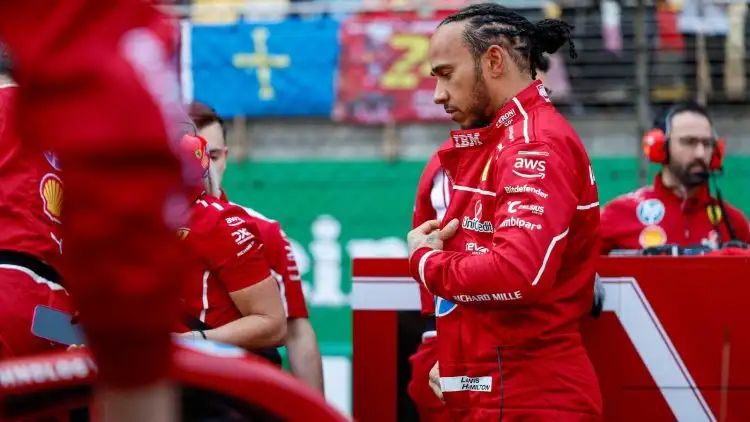Lewis Hamilton reveals ‘mad’ Ferrari experiment in ‘know not to…read more
Lewis Hamilton’s recent experience at the Chinese Grand Prix highlighted the delicate balance between car setup and on-track performance. After a stellar performance in the Sprint race, Hamilton and the Ferrari team made adjustments to the SF-25’s setup for the main qualifying session. These changes, however, led to challenges that impacted their performance in the main race.
Sprint Race Success
The weekend began on a high note for Hamilton and Ferrari. Securing pole position for the Sprint race, Hamilton showcased exceptional skill and strategy. He maintained his lead from start to finish, demonstrating remarkable tire management. In the final four laps, he extended his lead over second-placed Oscar Piastri by four seconds, underscoring his dominance. Teammate Charles Leclerc, however, struggled to match this pace, finishing fifth, 12 seconds behind Hamilton.
Setup Adjustments and Qualifying Challenges
Buoyed by their Sprint success, the Ferrari team decided to make setup changes to the SF-25 ahead of Saturday’s main qualifying session. These adjustments, intended to enhance performance, had unforeseen consequences. Hamilton described the car as being “on a knife edge,” indicating that the tweaks made the vehicle more challenging to handle. He noted that even minor changes led to a precarious driving experience, making it harder to put together cohesive laps.
The impact of these changes was evident in the qualifying results. Both Hamilton and Leclerc found themselves on the third row of the grid, approximately three-tenths off the pace set by competitors. This was a stark contrast to their earlier performance, highlighting how sensitive the car’s balance was to setup modifications.
Race Day Disappointments
The main race presented further challenges for Ferrari. Despite starting from the third row, both drivers aimed to capitalize on their positions. However, the race unfolded unfavorably. Hamilton finished in sixth place, while Leclerc managed a fifth-place finish. Post-race inspections dealt a significant blow to the team: both Ferrari cars were disqualified due to technical infringements. Hamilton’s car was found to have excessive skid block wear, and Leclerc’s car was underweight.
Hamilton’s Reflection
Reflecting on the weekend, Hamilton acknowledged the lessons learned from the setup changes. He admitted that the adjustments made the car’s handling more unpredictable, affecting their performance in qualifying and the race. He emphasized the importance of understanding how even minor tweaks can have significant impacts on the car’s behavior.
Team Dynamics and Communication
The weekend also shed light on the dynamics within the Ferrari team. During the main race, a moment of tension arose when Hamilton was instructed to allow Leclerc to pass. Initially perceived as a team order due to Hamilton’s pace, it was later revealed that Hamilton himself suggested the move, citing technical issues with his car. This incident highlighted the challenges of in-race communication and decision-making under pressure.
Looking Ahead
The Chinese Grand Prix served as a learning experience for Hamilton and the Ferrari team. It underscored the importance of meticulous setup decisions and the potential repercussions of even minor changes. As the season progresses, the team will likely approach future adjustments with increased caution, aiming to optimize performance without compromising the car’s balance and handling.
In the high-stakes world of Formula 1, where milliseconds can determine outcomes, the ability to adapt and learn from each experience is crucial. Hamilton’s reflections and the team’s response to the challenges faced in China will play a pivotal role in their strategies for upcoming races.
The weekend’s events also highlighted the competitive nature of the sport. McLaren’s strong performance, with Piastri and Norris securing a one-two finish, showcased the ever-evolving dynamics of Formula 1. For Ferrari, the focus will be on analyzing the data, understanding the impacts of their setup choices, and refining their approach to ensure better outcomes in future races.
In conclusion, the Chinese Grand Prix was a testament to the complexities of Formula 1 racing. For Hamilton and Ferrari, it was a weekend of highs and lows, offering valuable insights and lessons that will undoubtedly influence their approach in the races to come.




